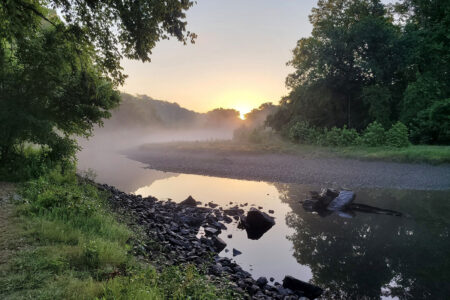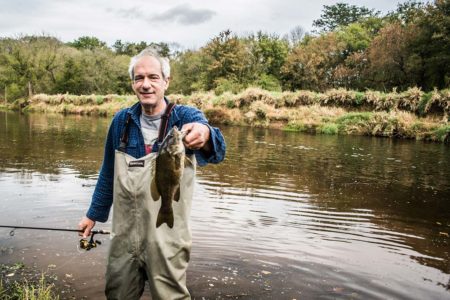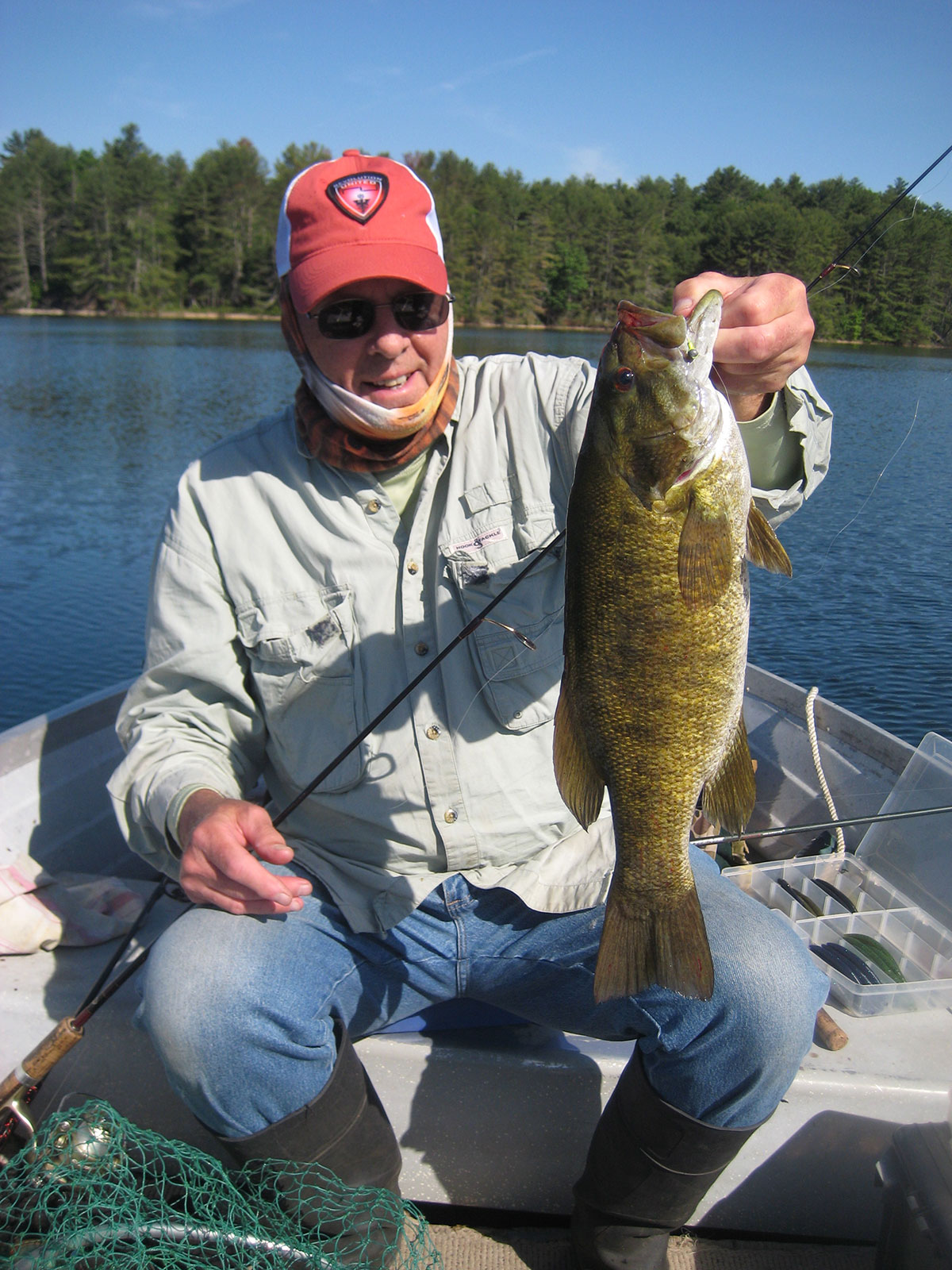
Massachusetts’ largest body of fresh water offers prime fishing for smallmouth bass.
In 2014 Bassmaster Magazine ranked Quabbin Reservoir 37th among the top 100 bass lakes in the United States. Those of us who regularly fish for bass at the Big Lady were not surprised by the impressive rating. We already knew that Quabbin was a premier bassin’ venue, especially for smallmouths.
The 25,000-acre impoundment on the Swift River in west central Massachusetts is full of bronzies of all sizes from dinks to giants. If you’ve been thinking about trying for smallies at Quabbin Reservoir for the first time, this article is for you.
Quabbin is divided into three fishing areas each having a boat launch and rental site. Gate 8 off Route 202 in Pelham serves as the launch/rental venue for Area 1; Gate 31 off Route 122 in New Salem handles Area 2; Gate 43 off Greenwich Road in Hardwick serves Area 3.
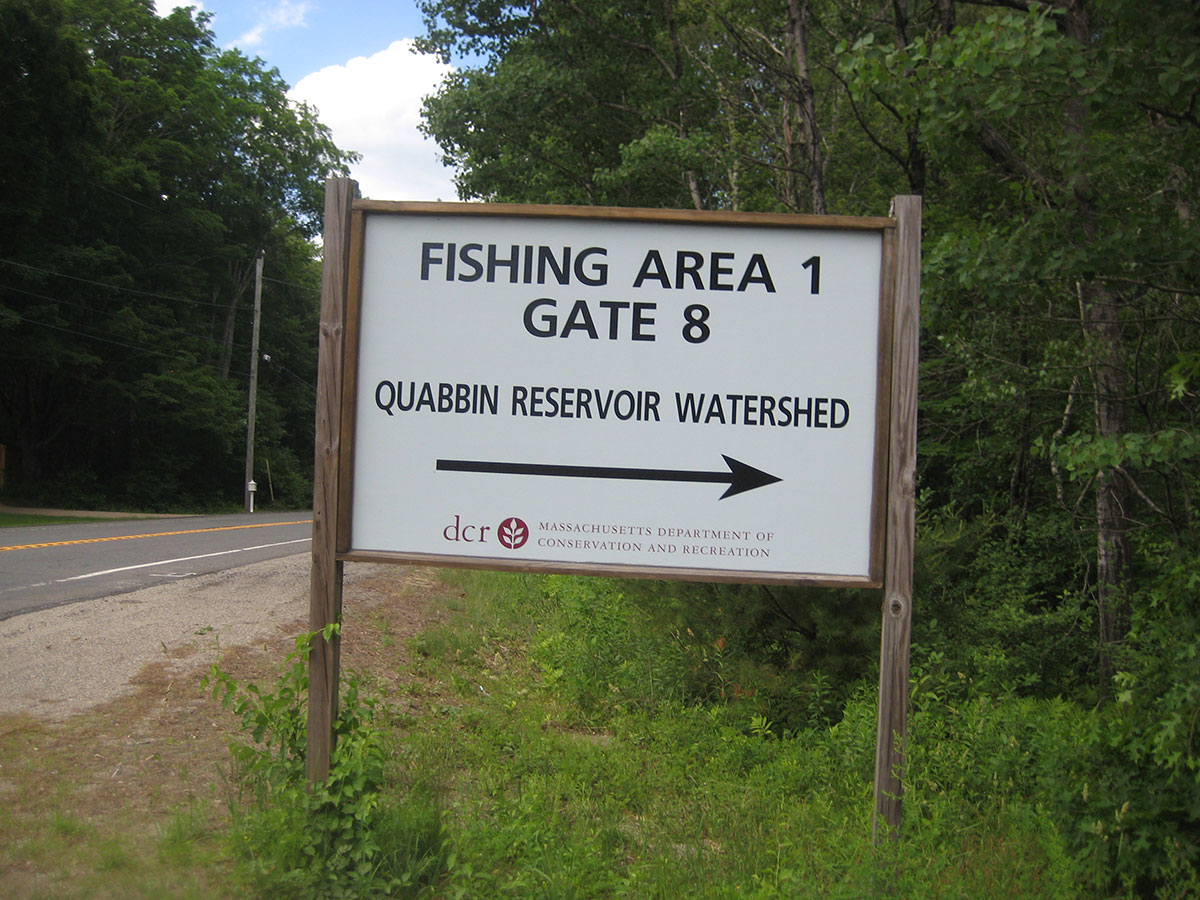
Spring is for Smallies
From Opening Day in April through the month of June smallmouth bass action at Quabbin Reservoir is outstanding. For beginners, May offers the best opportunity to experience a fantastic session. Early in the month can be challenging. Water is very cold, and bronzies are still sluggish and relating mostly to deep structure. The upside is that they tend to be bunched up; so, if you find one, chances are good you’ll catch several others in the same spot. By mid-May with water warming steadily, Quabbin’s smallies spread out and move into shallower water to prepare for spawning. Hooking into loads of bronzebacks in a single session is a distinct possibility at this time. In fact, between May 16 and Memorial Day smallmouths are usually available all over the reservoir including on beds. Any day during this brief span may provide you with some of the finest smallmouth bassin’ of the year.
All three fishing areas abound in prime cover and structure to which Quabbin’s springtime smallmouths relate including gravel points and shoals, rocky shorelines, sunken rock walls and piles, sand-and-pebble flats, boulder-strewn flats, nearshore drop-offs, shallow and deep coves, and so on. My fishing partner, John Chrisant, and I have spent a great deal of time angling for and doing extremely well with smallmouths in all three sections. For the past 20 years or so, though, we’ve concentrated mainly on Areas 2 and 3 out of Gate 31 in New Salem. Therefore, the following suggestion may seem somewhat contradictory. Despite preferring Area 2, which also provides access to Area 3, John and I concur that Area 1 (Gate 8) is better for newcomers. The smallmouth fishing in Area 1 is just as good as in Areas 2 and 3, and there is much less bass-angling pressure. More importantly, you do not have to possess an intimate knowledge of the reservoir in order to experience success. Within minutes of getting on the water via the Gate 8 launch/rental site, you can be fishing prime, springtime smallmouth bass habitat. And there’s so much of it, you can spend an entire day casting and retrieving and cover only a fraction of what’s available. Here’s an itinerary to follow…
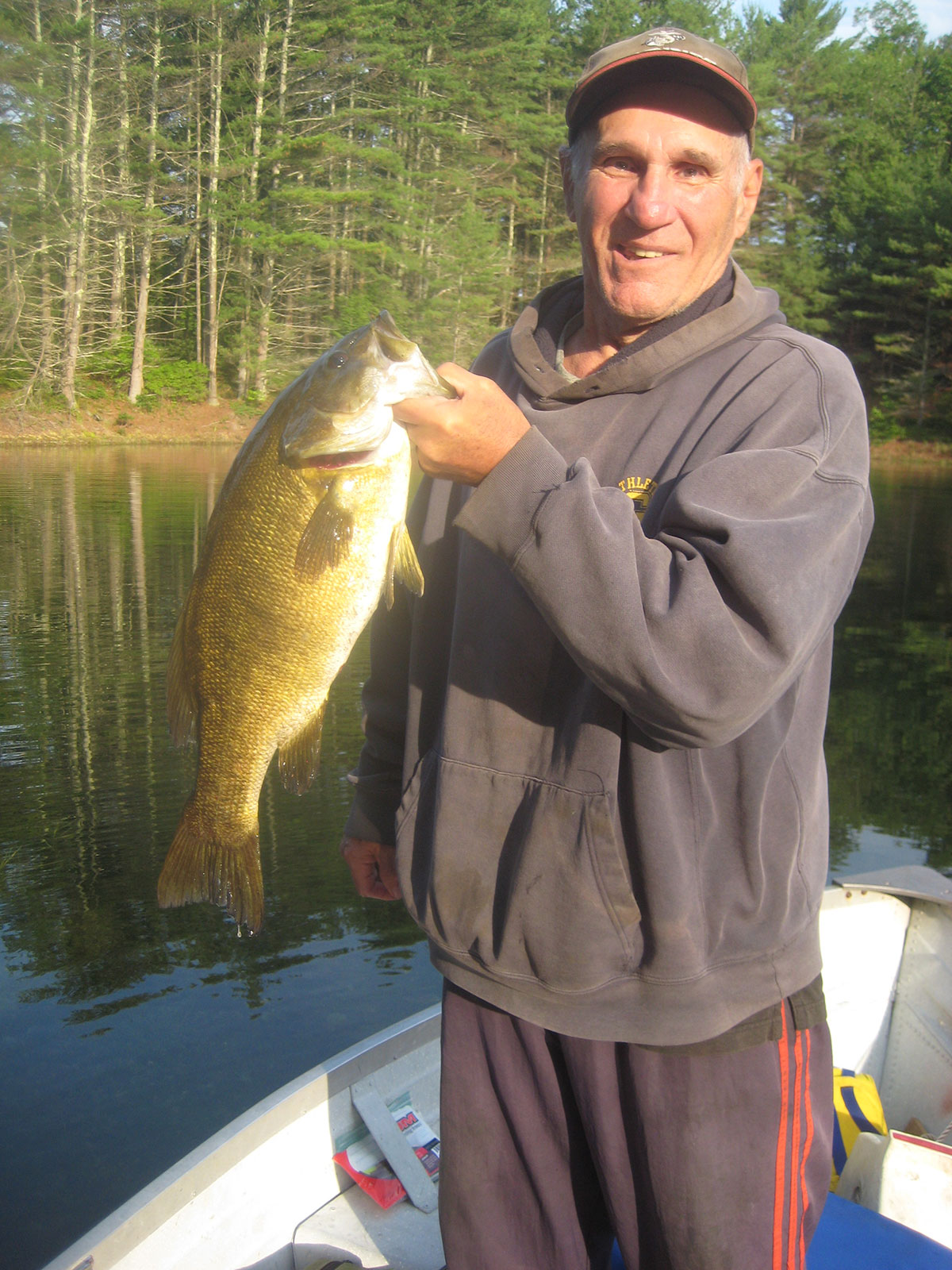
The Ropes
After launching at Gate 8, proceed south exiting the little cove in which the ramp is located. After departing the cove, turn east toward the island (known as Gate 8 Island) which you cannot miss because it is the only one in the vicinity. Pass by the north end of the island and then head directly across to the land mass on the opposite (east) side of the reservoir. This land mass is Prescott Peninsula. It forms the eastern shoreline of Area 1. Do not go past the barrel line. Stay on the north side of the highly visible yellow barrels. If a breeze blows from the south, begin fishing right away and work northward along the peninsula. With a north wind prevailing, travel north a few miles along Prescott and let the wind push you southward as you fish. If you select the latter, consider heading way up in Area 1 to the Gate 12 and 13 section where you’ll find small islands, incoming brooks, inshore and offshore shoals as well as miles of superb smallmouth shoreline.
Position your boat over about 15 to 20 feet of water so you can probe both shallow and deep water. If you don’t have a portable depth sounder for use in a rental boat (see sidebar), you can still set up over the right depth by using your eyes. Quabbin’s water, especially in Area 1, is very clear, and you can view bottom in 20 feet or so. Indeed, if you stay within visible distance of the first drop-off into deep water, you’ll be perfectly situated to work lures in close for smallies already in the shallows, along the drop edge for bronzies moving up, or in deeper water for bass that are staging. At this time of the year lake trout relate to the same cover and structure and hit the same lures as smallies, so you might bump into one or two forkies while fishing for bronzies. You might also hook a rainbow trout or landlocked salmon.
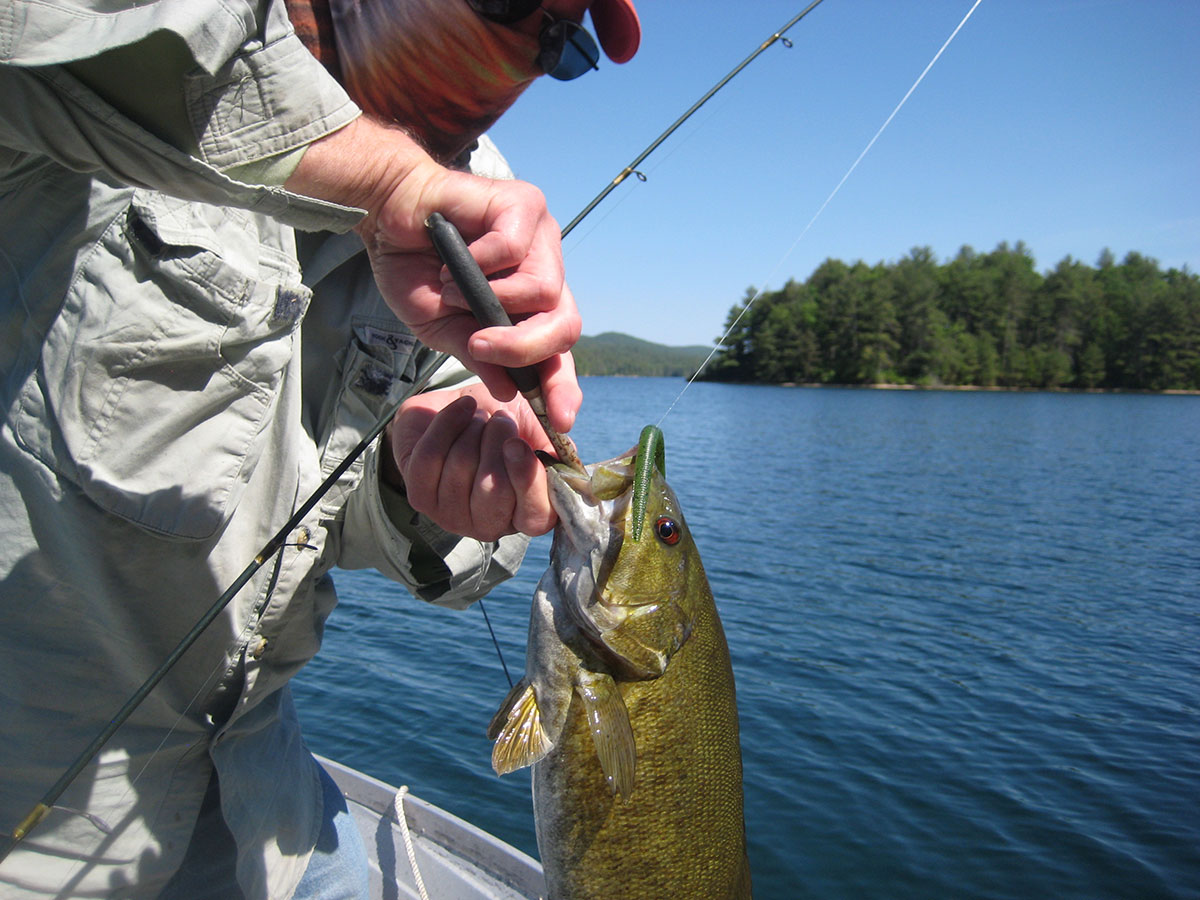
Go Light
Employ light tackle. Virtually every smallmouth you hook will be in snag-free environs comprising mostly rock, rubble, sand, and gravel—nothing much for bass to hang up on. Back in the 70s and 80s John and I used heavy-duty bass-bustin’ gear for Quabbin’s smallies. It was the kind of equipment needed to handle beer-bellied, bucketmouths in thick cover but had far too much muscle for open-water bronzebacks, even big ones in the 4- and 5-pound classes. Now we use much lighter gear including ultralight spinning. The smallies are a blast on light gear.
Bring your favorite smallmouth lures. They’ll work as well as any others including ones John and I have favored over the years. Your selection should include jigs, soft-plastic swimbaits, and Ned Rigs for bottom bouncing; crankbaits; swimbaits, and jerkbaits for shallower work; and surface plugs for topwater fishing. I’d also recommend wacky-rigged Senkos and Yum Dingers in dark colors. These plastic wonder worms have become our favorite bass lures. We’ve caught a load of springtime Quabbin smallmouths on them in the past 20 years. If you’re into fly-fishing for bass, by all means bring your fly-casting gear and an assortment of bass bugs, popping bugs, flies, and streamers. For many years John and I fly-fished homemade popping bugs for Quabbin smallies. We had a ball battlin’ the bronzies on the long wand.
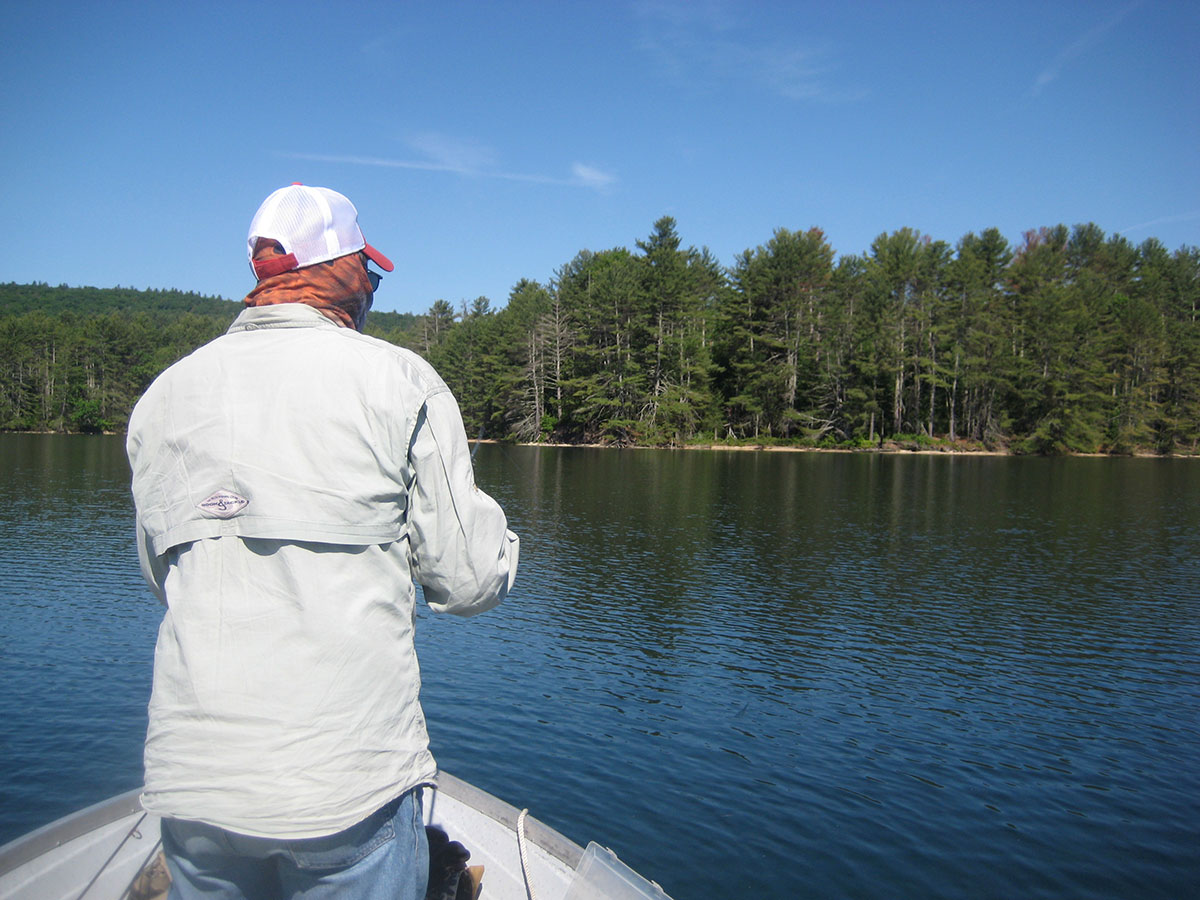
Weather Matters
| BOATS RENTALS & MORE |
| If you are unfamiliar with Quabbin Reservoir, be sure to check the reservoir’s website at www.mass.gov/info-details/quabbin-reservoir-fishing-guide. Quabbin is operated by the Massachusetts Department of Conservation and Recreation and has its own fishing season, daily opening and closing times, boats-off-the-water times, horsepower limitations, creel limits, and a host of other rules and regulations. Chief among regulations is the requirement that private craft must have an intact Quabbin Boat Seal in order to launch on the reservoir. To obtain a Quabbin Boat Seal, your boat, engine, and equipment must be cleaned of all contaminants including invasive aquatic species such as zebra and quagga mussels at an approved DCR decontamination facility. Or you can rent a DCR boat and motor, (credit card only). All pertinent information including a boat rental form to fill out in advance is provided on the website. In May and June demand for boat rentals is very high, even on weekdays. To maximize your chance of obtaining a rental boat, get in line as early in the morning as possible. Quabbin’s launch/rental areas open daily at 6 a.m. and being in line no later than 4:30 a.m. is strongly recommended. If you don’t have a valid Massachusetts fishing license, a special one-day, Quabbin-only fishing license is available to residents and non-residents alike for $5, (credit card only). The Quabbin-only permit is available at each of the reservoir’s three boat launch/rental areas. It is also offered online at MassFish/Hunt, but in order to utilize the app, you must first set up an account. |
If possible, avoid the first day or two following the passage of a cold front especially if wind is from the north at 10 mph or greater. Sunny days with light breezes from any direction are fine. Warm-fronts can trigger excellent action even if wind is strong from the south, but watch for thunderstorms. Quabbin is no place to be in an electrical event. An unseasonably hot day with temperatures in high 80s or low 90s usually sees the very best bass fishing. Under such conditions Quabbin’s springtime smallmouths seem to go absolutely nuts.
Well, that should be enough to give you a good start. By the way, if you can’t make a springtime trip to Quabbin, don’t be disappointed. June is outstanding too. (John and I experienced one of our finest smallmouth bass trips of 2022 on June 6 at Gate 8. We caught and released 22 smallmouths, a dozen of which measured between 17.5 and 20 inches.) The fishing’s a bit different in June—John and I depend heavily upon wacky-rigged Senkos and Yum Dingers as well as surface lures—and the bronzies, being typical post-spawners, tend to be light for their length. (The heaviest of that June 6 session, a 19.75-incher, weighed only 3 pounds, 9 ounces.) But there are still tons of them around, most relating to the same shoreline and shallow offshore structures as in the spring.

